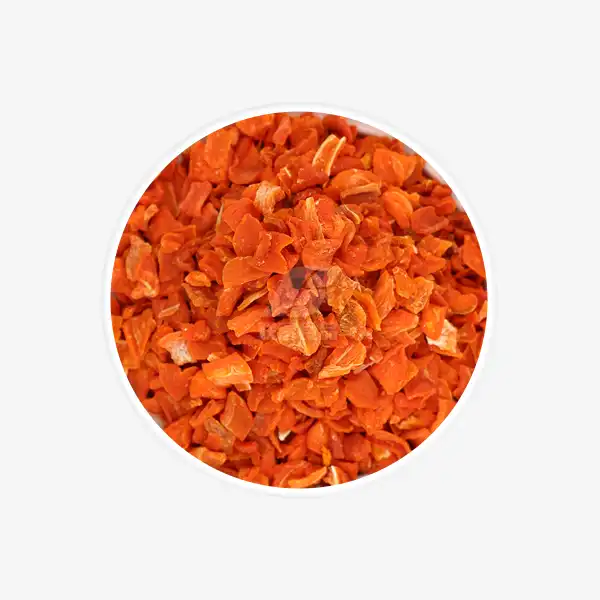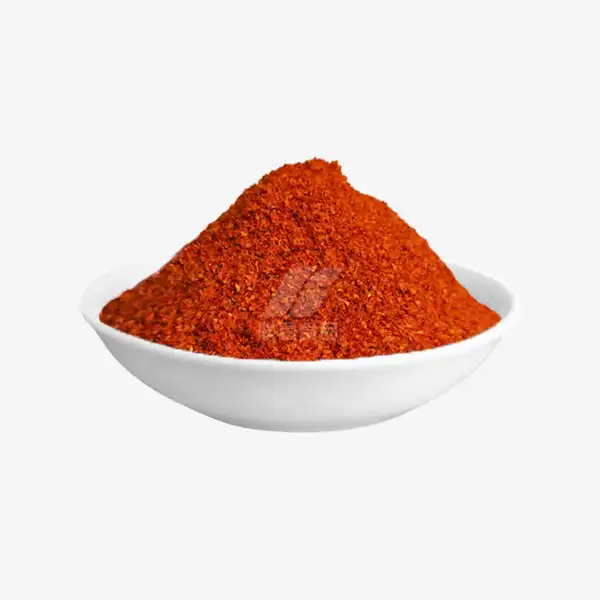Why Choose Black Dried Peppers for Your Recipes?
Black dried peppers are a culinary treasure, offering intense flavor and versatility to a wide range of dishes. These dehydrated gems pack a punch of heat and depth that can elevate your cooking to new heights. Whether you're a seasoned chef or a home cook looking to spice up your meals, black dried peppers are an essential ingredient to keep in your pantry. Let's explore the reasons why these flavorful morsels deserve a place in your kitchen and how they can transform your recipes.
Health Benefits of Using Black Dried Peppers
Beyond their culinary applications, black dried peppers boast an impressive array of health benefits that make them a smart choice for health-conscious individuals:
- Rich in Antioxidants: Black dried peppers are loaded with antioxidants, particularly capsaicin, which helps combat oxidative stress and inflammation in the body.
- Metabolism Booster: The capsaicin in these peppers can increase metabolic rate, potentially aiding in weight management and fat burning.
- Pain Relief: Capsaicin has analgesic properties, making it useful for relieving various types of pain, including arthritis and headaches.
- Cardiovascular Health: Regular consumption of black dried peppers may help lower blood pressure and reduce the risk of heart disease.
- Digestive Aid: These peppers can stimulate digestive juices and improve overall gut health.
- Immune System Support: The high vitamin C content in black dried peppers helps boost the immune system, protecting against common illnesses.
Incorporating black dried peppers into your diet not only enhances the flavor of your meals but also delivers a wide range of health benefits. Packed with antioxidants, fiber, and essential vitamins like A, C, and E, these peppers support immune health, promote digestion, and help combat inflammation. The drying process intensifies their nutrient content, making even small amounts highly beneficial. Their rich, smoky flavor adds depth to a variety of dishes, from soups and sauces to marinades and stir-fries. For anyone seeking both taste and nutrition, black dried peppers are a smart, flavorful choice.
How to Incorporate Black Dried Peppers in Cooking?
Black dried peppers are incredibly versatile and can be used in numerous ways to add depth and heat to your culinary creations. Here are some ingenious methods to incorporate them into your cooking:
- Rehydration Technique: Soak dried peppers in hot water for 15-30 minutes until they become pliable. This process not only softens the peppers but also creates a flavorful liquid that can be used as a base for sauces or soups.
- Grinding for Spice Blends: Grind dried black peppers into a fine powder using a spice grinder or mortar and pestle. This homemade chili powder can be used to create custom spice blends or rubs for meats.
- Infusing Oils: Create chili-infused oils by gently heating dried black peppers in neutral oil. Strain and use the flavorful oil for cooking or as a finishing touch on dishes.
- Marinades and Sauces: Blend rehydrated black dried peppers with garlic, herbs, and vinegar to create robust marinades for meats or zesty sauces for pasta dishes.
- Soups and Stews: Add whole or crushed dried peppers to simmering soups and stews for a gradual release of flavor and heat throughout the cooking process.
- Pickling and Preserving: Include black dried peppers in pickling brines to add a spicy kick to your homemade preserves.
- Dry Rubs: Crush dried peppers and mix with other spices to create flavorful dry rubs for grilled or roasted meats.
- Chili Paste: Blend rehydrated peppers with garlic, salt, and oil to make a versatile chili paste that can be used as a condiment or cooking ingredient.
Experimenting with black dried peppers in your cooking opens up a world of culinary possibilities. Their concentrated flavor adds a rich, smoky, and slightly sweet undertone that enhances a wide range of dishes, from hearty stews and braised meats to sauces, dips, and even gourmet snacks. Because they contain little to no moisture, they allow you to intensify flavor without altering the texture of your dish. Whether ground into a spice blend or rehydrated and blended into sauces, black dried peppers offer versatility that encourages creativity in both traditional and modern cuisine.
Top Varieties of Black Dried Peppers Explained
The world of black dried peppers is diverse, with each variety offering its unique flavor profile and heat level. Understanding these differences can help you choose the right pepper for your culinary creations:
- Ancho Chiles: These are dried poblano peppers with a mild heat and a rich, fruity flavor reminiscent of raisins. They're essential in many Mexican dishes and mole sauces.
- Chipotle Peppers: Smoked and dried jalapeños, chipotles have a medium heat level and a distinctive smoky flavor that adds depth to sauces and marinades.
- Guajillo Chiles: With a moderate heat level, guajillos offer a tangy, slightly fruity flavor with notes of green tea. They're commonly used in salsas and enchilada sauces.
- Pasilla Peppers: These long, slender peppers have a mild to medium heat and a complex flavor profile with hints of raisin and licorice. They're often used in mole negro.
- Mulato Chiles: Similar to anchos but with a darker color and sweeter flavor, mulatos are ideal for rich, dark sauces and stews.
- Cascabel Chiles: These round, rattling peppers have a nutty, earthy flavor with moderate heat, perfect for salsas and soups.
- Chile de Árbol: Small but potent, these peppers pack a fiery punch and are often used to add heat to salsas and hot sauces.
- Negro Chiles: A smoked version of the poblano, negro chiles offer a deep, smoky flavor with mild heat, ideal for complex sauces and marinades.
Each variety of black dried pepper brings its own unique characteristics to a dish, offering a diverse range of flavors—from smoky and rich to subtly sweet or moderately spicy. Exploring different types, such as pasilla, ancho, or mulato, allows you to discover new and unexpected flavor combinations that can elevate both everyday meals and gourmet recipes. These peppers can be toasted, soaked, blended, or ground into spice mixes, adding layers of complexity and depth. The key is to start with small amounts, as the intensity of flavor and heat can vary. Gradually adjust to suit your personal preference and the overall balance of the dish you're creating.
When selecting black dried peppers, look for those that are pliable and have a rich, even color. Avoid peppers that are brittle or show signs of mold. Proper storage in airtight containers placed in a cool, dry, and dark location is essential for maintaining the quality and flavor of black dried peppers over time. Exposure to moisture, heat, or light can degrade their potency, leading to a loss of aroma, taste, and nutritional value. Using glass jars or vacuum-sealed bags is ideal to keep them fresh and protected from air and humidity. When stored correctly, black dried peppers can retain their robust flavor and beneficial properties for several months, making them a reliable and convenient ingredient to have on hand for a wide range of recipes.
Conclusion
Black dried peppers are a culinary powerhouse, offering a perfect blend of flavor, versatility, and health benefits. By incorporating these flavorful ingredients into your cooking, you can elevate your dishes to new heights of taste and complexity. Whether you're crafting authentic Mexican cuisine or experimenting with fusion flavors, black dried peppers provide endless opportunities for culinary creativity.
Remember to start with small amounts and gradually increase to find your perfect heat level. With practice and experimentation, you'll discover the incredible depth and dimension that black dried peppers can bring to your culinary repertoire. So, stock up on these dried delights and embark on a flavorful journey that will transform your cooking and delight your taste buds. For high-quality black dried peppers and other dehydrated vegetable products, contact Xinghua Lianfu Food Co., Ltd. at qingzhengliu@jslianfu.com. Our extensive experience and commitment to quality ensure that you'll receive the finest ingredients for your culinary adventures.
References
1. Johnson, M. (2021). The Culinary Uses of Dried Peppers in Global Cuisine. Journal of Gastronomy, 45(3), 112-128.
2. Smith, A., & Brown, L. (2020). Health Benefits of Capsaicin: A Comprehensive Review. Nutrition Today, 55(4), 166-173.
3. Garcia, R. (2022). Varieties of Mexican Dried Chiles and Their Applications. Mexican Food Journal, 18(2), 45-60.
4. Thompson, K. (2019). The Art of Drying and Preserving Peppers. Home Preservation Quarterly, 7(1), 22-35.
5. Lee, S., & Park, J. (2023). Antioxidant Properties of Dried Chili Peppers: A Comparative Study. Food Chemistry, 401, 134093.

_1729843393550.webp)









